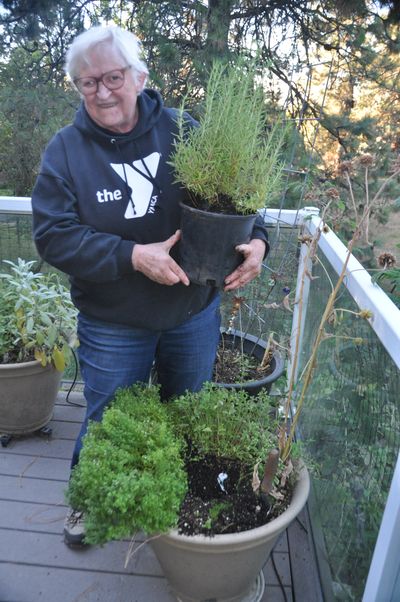Gardening: With cooling weather, time to prep outdoor potted plants for winter

It’s finally cooling off and it’s time to tuck in those potted plants that have decorated our decks and patios all summer.
Gardening in containers has increased in popularity over the past few years as people move into smaller spaces or want a showy garden right on their deck. Many of those pots have been filled with annuals, perennials, shrubs and small trees of varying hardiness to our USDA Zone 5. In my experience, the USDA zoning system may say we are in Zone 6, but there are so many microclimates here that it’s better to say we are Zone 5.
First, if your plants are truly not hardy to the cold temperatures, you will need to find a place in the house or a heated greenhouse or garage to keep them above freezing. Do some research on how much light the plants need and place them accordingly. Some will be fine in the low light of a basement, but others may need brighter light to stay healthy through the dormant season. I know people who cut deals with friends to house their tender plant collections in warm spaces over the winter.
For plants that can take the cold, there are several options for protecting them. Keep in mind, however, that plants in pots regardless of how hardy they are, don’t have the protection of a deep bed of soil to protect its roots and can be damaged if we get a cold winter. Case in point, I have a rosemary plant I will be digging up and bringing indoors. Most rosemary varieties aren’t hardy here no matter what the description on the tag said.
If your containers can be easily moved, move them to a protected area like a sheltered porch, unheated garage or shed. Once they lose their leaves and go dormant, they aren’t going to need much light and only an occasional watering through the winter. A neat trick is to put snowballs on the soil to melt and water the plants. Smaller plants can be dug out of containers and planted into a nursery bed in the garden and then replanted into their pots next spring. Be sure to cover the bed with 2 to 3 inches of mulch for extra insulation.
If your containers are too big to move or you don’t have any other space for them, group them together and wrap the pots with burlap, old blankets or a tarp to create a windbreak. Don’t cover the plants themselves as the covering can heat up if we get a sunny day in February. Some people pack leaves or pine needles around the pots under the covering for extra insulation.
The containers themselves may not be frost proof. Terra cotta clay pots absorb water and will shatter when they freeze. Hard-fired and glazed pots won’t absorb moisture but can crack if the soil left in them freezes. If the pots don’t have plants in them, cover the opening to keep out the rain and snow.